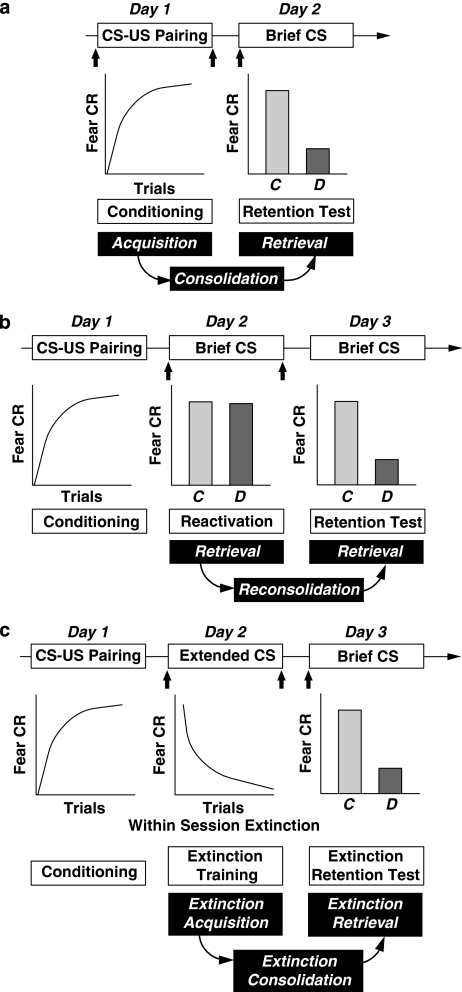Figure 1.
Schematics for the phenomena of acquisition (a), reconsolidation (b) and extinction (c). The first line in each schematic is procedural, with the arrows indicating usual points of drug administration in different published studies. The second line indicates what happens behaviorally, in particular the extent of fear responding by the control, C, and animals receiving the disruptive agent, D. In this case, the disruptive agent is the GABAA receptor agonist. The third line is the common paradigm nomenclature for that part of the procedure. The fourth line indicates the key assumed memory processes important to that particular phenomenon; preceding processes are assumed (eg, for reconsolidation and extinction, the initial acquisition process is assumed; for extinction, it may be that some reconsolidation occurs during the early phase of extinction training). It should be noted that the process of ‘retrieval' indicates access to the memory representation; additional processes that may then interfere with or facilitate CR expression are not explicitly indicated (nor are basic sensory processes that are assumed to be operative during acquisition). CR=conditioned response; CS=conditioned stimulus; US=unconditioned stimulus; brief CS=a limited number or duration of CS presentations; extended CS=many or long duration presentation of CS.

